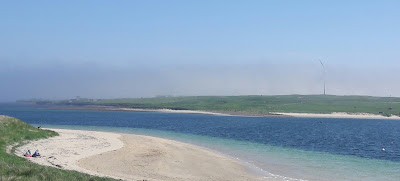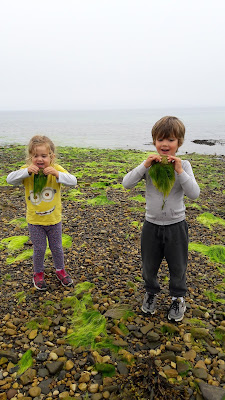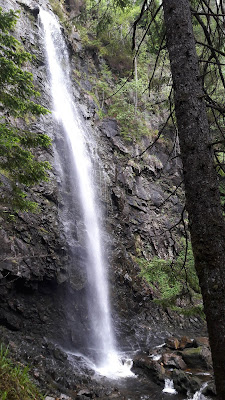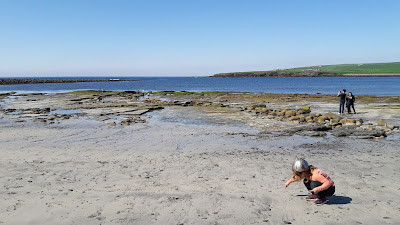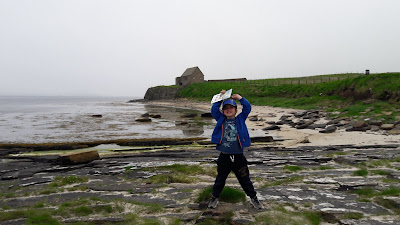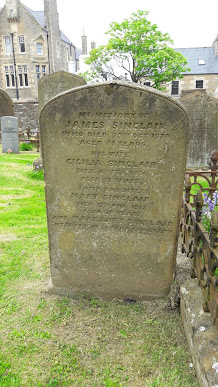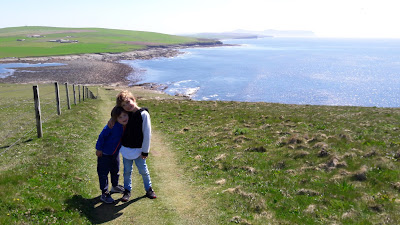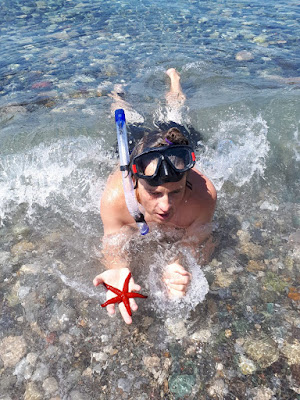 |
| Thanks Uncle Phil |
Sunday, December 13, 2020
Our Orcadian Saga (Part 2) – Seabirds, Sea Creatures and South to the Caledonian Forest
Sunday, October 25, 2020
Our Orcadian Saga (Part 1) – A Layer Cake of Historical Riches
 |
| Wrong era canon, but the kids aren't picky |
Tuesday, September 15, 2020
An Abundance of Greek Wildlife with a Tiny, Perfect Surprise
Our elongated summer trip to Greece was a lifesaver after 4 intensely difficult months in UK lock-down. Alongside the food, family and sunshine, exploring the sea from a small, stony, olive tree strewn, spit of land in Evia was refreshing for the soul. At least twice a day, everyday, I took to the sea with my snorkel and explored. Quite simply I have never seen so much wildlife in Greece.
Before we get to the water, it would be amiss to not mention the land and air.
ABOVE THE WAVES
We found a fascinating array of insects.
Dozens of large dragonflies hovering and darting around sunset. Throbbing tzitzikes (cicadas) clinging to trees for dear life, combining to make a hypnotic noise through the heat of the day, to be replaced by the altered tones of grasshoppers at night. Whole troops of ants, ferrying their grubs from one next to the other, only to be robbed by a spider. A massive, viscous looking centipede crawling around our bedroom. Butterflies in a myriad of shapes and colours, including a monarch with fighter jet wing tips and the most perfectly camouflaged butterfly I have ever seen.
Best of all, was a lime green praying mantis. The beauty was spotted by my kids on the ground and was watched closely as it slowly but surely used its strange, jagged gait to manourve up an olive tree.
There were birds a plenty, though very few of the song bird variety. Hundreds of swallows, swifts and martins swooped around the sky gulping down mozzies. Haggles of seagulls pointed to shoals of fish, while a heron and an egret waited to dart their sharp beaks into the water. An occasional bird of prey soared above, looking for a carcass. As always, crows and pigeons.
On that note, while it was thoroughly (if recently) dead, a dead adder on our path still made us jump back a foot. Other reptiles included a gecko scrambling up the villa wall and a tiny lizard zipping across the basketball court.
There were mammals too. While there was no repeat of the massive wild boar we had seen crossing the mountain the winter past, there were nine new semi-wild kittens in the garden, signs of hunted moles and many a bat flapping too and fro over the water.
RICHES OF THE SEA
The sea was though the real show. With the possible exception of Alonissos, I saw more fish than I have seen anywhere in the Mediterranean in both number and variety (at least 20 species). Hanging around the rocks and Poseidon sea-grass were, to name just a few, rainbow wrasse, combers, red scorpion fish, blennys, damselfish, weeverfish, striped bream and tiny unidentified cleaner fish. Out in the open water were serial shoals of glittery, silver gavres (I only know the Greek word), on some days a thousand strong.
I also found hunters. Long, thin, darty, zarganes (needlefish) zipped around just under the surface, sometimes on their own, other times in groups up to forty strong. I was even lucky enough to find a couple of trigger fish. One a baby hiding behind a rock, the other mature, circling around near the surface.
Picking through the rocks by the shore, the kids and I found snails, tiny crabs and translucent shrimp. A bit deeper out were fan worms, hermit crabs, mussels on a buoy, dozens of starfish, brittle stars and a solitary large clam. Signs of life beneath the sand and rock were clear with many types of shells snagged on urchins.
Every so often the surface would be invaded by dozens of jellyfish. I identified four different species, with the coolest being piato (fried egg jellyfish). Up to 30 cm across, with a brown, bulbous, water pumping head and small tentacles topped by bright purple dots. One of them even had translucent fish living in the tentacles, who darted into the flaps behind the head when I approached.
The ines (small stringy stingy things) were not so fun. On an ambitious morning, Christina, Dan, Nasia and I walked to the nearest village and swam 2 km back along the shore. While the sea was calm on the surface, it was teeming with ines beneath. We found patch after patch and emerged with scores of stripey small welts. It was a great swim nonetheless, but this was a reminder that we are ill equipped visitors to the sea.
Barely better equipped (given the patched up holes in the bottom), we also explored the bay from our old battered canoe. The kids equally enjoyed grabbing hold of the paddle or facing the prow as Chris or I powered away parallel to the shore. Along with moments of serenity, came paddles through swarms of jellyfish, fish springing out the water to our side and, after a near perfect ride, the absolute comedy of my eldest son falling overboard as he lost his balance waving to his Giagia. As I fished him back in, the canoe nearly capsized in one direction and then the other, before we just about managed to remedy the situation by frantically bailing water with our hands, laughing the whole while.
MOLLUSCS GALORE
Back under the waves, I spent much of my time scouring the sea-floor for molluscs. For the first week I mostly found soupies (cuttle fish). I found half a dozen or more. On two occasions, they were the first thing I saw as I dipped my mask in the water. On another, my daughter and I came across a large and a small one in alternating colours probably doing some mating ritual. The boys swam over and the ritual soon stopped.
My favourite was a large cuttlefish I spotted on a patch of yellow sponge about 4 meters down. What looked like a slight yellow bump on the pinnacle of the sponge made me decide to dive down and, low and behold, it was a near perfectly camouflaged cuttlefish. It swiftly changed colour to black, squirted me with ink and shot off into the shallows.
 |
| Borazont at English Wikipedia |
 |
| Albert Kok at Dutch Wikipedia |
All said a plethora of life, but I have left the very best discoveries until last…
DOLPHINS EVERYWHERE
One of these has to be the dolphins and, in this case, common bottle-nose dolphins. We saw them 5 different times. Two were only short glimpses as they commuted past. Another I have already mentioned (dolphin blog). The most relaxing was sitting on the beach at the end of the day, beer in hand, watching a large pod slowly arc across the water in the distance. They even crossed the deep red reflection of the sun, scoured across the sea by ends of the sunset.
My favourite sighting was though the last. It was one of the best experiences of my life. A pod of at least 30 dolphins decided to go fishing outside our doorstep. For an hour they jumped, circled and ate. At one point they split into three distinct group, so everywhere you looked were dorsal fins and spurts of air. As soon as I saw them I sprinted to the shore (idiotically damaging my foot in the process) and swam out to join Christina and Philip (our neighbour) in the sea, while the kids stayed on the beach shouting out to the dolphins with their Giagia.
We watched them from about 50 meters out for half an hour, begging for them to come nearer. At times a dolphin would spring out the water, with one shooting a good 2 meters straight up into the air, before re-entering with barely a ripple. What joy, for them and us.
| Chris, me and a dolphin! |
It was joined by another and, as one, they suddenly turned right towards us. Out of instinct we huddled closer together and shouted with excitement as they headed straight towards us. They were so close we could see their blow holes. 10 meters, 5 meters, 2 meters and then they dove under. I flicked down my goggles and thrust my head under the water just in time to watch them swim right under our feet, turning to their sides in unison as they did so, exposing their white underbellies.
I can only think it was an inquisitive goodbye, as we did not see another dolphin that day. They disappeared into the deep blue, leaving us feeling deliriously full of life.
AT LONG LAST
To me at least, the final discovery I will mention matched the dolphins. If a month ago you had asked me which 5 animals I most want to see before I die, this would certainly have been one of them. I have searched for them across the oceans of the world, diving and snorkelling for the best part of 20 years, yet somehow they have always alluded me. The seahorse!
 | ||
| This file is licensed under the Creative Commons Attribution-Share Alike 4.0 International license. Attribution: © Hans Hillewaert |
I had a glimmer of hope of finding one, as Christina told me they used to see them here when she was a small kid, hanging in the shallows to the side of the paths the locals make through the rocky shallows. None of the family had though seen one for a couple of decades. That was though enough for me to spend several hours diving up and down on repeat, scouring the sea-grass and scrub for one of these delicate, perfectly camouflaged, fundamentally odd shrimp devouring creatures.
It took me two weeks. Having all but concluded there were no more to be found in these waters, I kept diving down in forlorn hope and, against all expectation, found a little beauty. It was a short-snouted seahorse. About 10 cm tall, green and almost indiscernible against its backdrop of sea-grass, I can’t believe I saw it. I was so shocked I put my hand down to the side and nearly grabbed a small red scorpion fish.
A bit startled, I pulled my hand back up, managed to re-locate the seahorse and stared at it until my lungs ached. I surfaced, took a deep breath and plunged back down. I discovered it again and tried to take in every detail. Its thin snout, crenellated body and tightly bound gripping tail. It was fantastic. My air again ran out. I surfaced, recovered and dived back under. Nothing. I could not find it for the life of me. For all I know it could have been right in front of my eyes, but try as I might I could not locate it. I swam back to shore bursting with happiness and excitement.
FAREWELL WITH HOPE
On my final evening, as soon as the sun set, I jumped into the canoe and paddled straight out towards the dying gleam of red. When a good distance from shore, I put down the oar, crossed my legs, sipped my beer and stared out across the water. It was shimmery red and purple, with an oily gleam from the water tension. The sky was giving way from red to night, as mount Parnassos framed the distance, capped with a thin line of cloud. A perfect moment. Content and thankful for everything we had seen, I turned to port, powered towards mount Kardili with a final burst and then, finally, turned to port again and headed for home.
Above all, I was so glad there is still such wildlife in Greece to discover, protect and, just maybe, regenerate from. Sadly, most of Greece is not so lucky, with the seas chronically depleted. I dearly hope a corner is turned and my kids’ kids get to see such sights.
 |
| To finish - some of the wildlife on the beach! |






